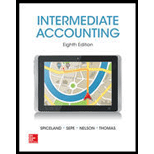
Debt securities: The financial instruments which are bought by investors, or corporations, or mutual funds, are referred to as debt securities. The companies issue debt securities to raise capital for the purposes of purchasing assets, or paying debts.
Equity investments: The financial instruments which claim ownership in the issuing company and pay a dividend revenue to the investor company, are referred to as equity securities. The investments in equity securities are referred to as equity investments.
To indicate: The three categories in which investments in debt securities and equity securities are classified
Explanation of Solution
For, the purposes of reporting, the investments in debt securities and equity securities are classified in the following three categories:
- Held-to-maturity securities
The debt securities which are held by the investor with the intent to hold the investment till its maturity are referred to as held-to-maturity securities.
- Trading securities
-
Trading securities are short-term investments in debt and equity securities with an intention of trading and earning profits due to changes in market prices.
- Available-for-sale securities
-
Available-for-sale securities are short-term or long-term investments in debt and equity securities with an intention of holding the investment for some strategic purposes like meeting liquidity needs, or manage interest risk
Want to see more full solutions like this?
Chapter 12 Solutions
INTERMEDIATE ACCOUNTING

 AccountingAccountingISBN:9781337272094Author:WARREN, Carl S., Reeve, James M., Duchac, Jonathan E.Publisher:Cengage Learning,
AccountingAccountingISBN:9781337272094Author:WARREN, Carl S., Reeve, James M., Duchac, Jonathan E.Publisher:Cengage Learning, Accounting Information SystemsAccountingISBN:9781337619202Author:Hall, James A.Publisher:Cengage Learning,
Accounting Information SystemsAccountingISBN:9781337619202Author:Hall, James A.Publisher:Cengage Learning, Horngren's Cost Accounting: A Managerial Emphasis...AccountingISBN:9780134475585Author:Srikant M. Datar, Madhav V. RajanPublisher:PEARSON
Horngren's Cost Accounting: A Managerial Emphasis...AccountingISBN:9780134475585Author:Srikant M. Datar, Madhav V. RajanPublisher:PEARSON Intermediate AccountingAccountingISBN:9781259722660Author:J. David Spiceland, Mark W. Nelson, Wayne M ThomasPublisher:McGraw-Hill Education
Intermediate AccountingAccountingISBN:9781259722660Author:J. David Spiceland, Mark W. Nelson, Wayne M ThomasPublisher:McGraw-Hill Education Financial and Managerial AccountingAccountingISBN:9781259726705Author:John J Wild, Ken W. Shaw, Barbara Chiappetta Fundamental Accounting PrinciplesPublisher:McGraw-Hill Education
Financial and Managerial AccountingAccountingISBN:9781259726705Author:John J Wild, Ken W. Shaw, Barbara Chiappetta Fundamental Accounting PrinciplesPublisher:McGraw-Hill Education





